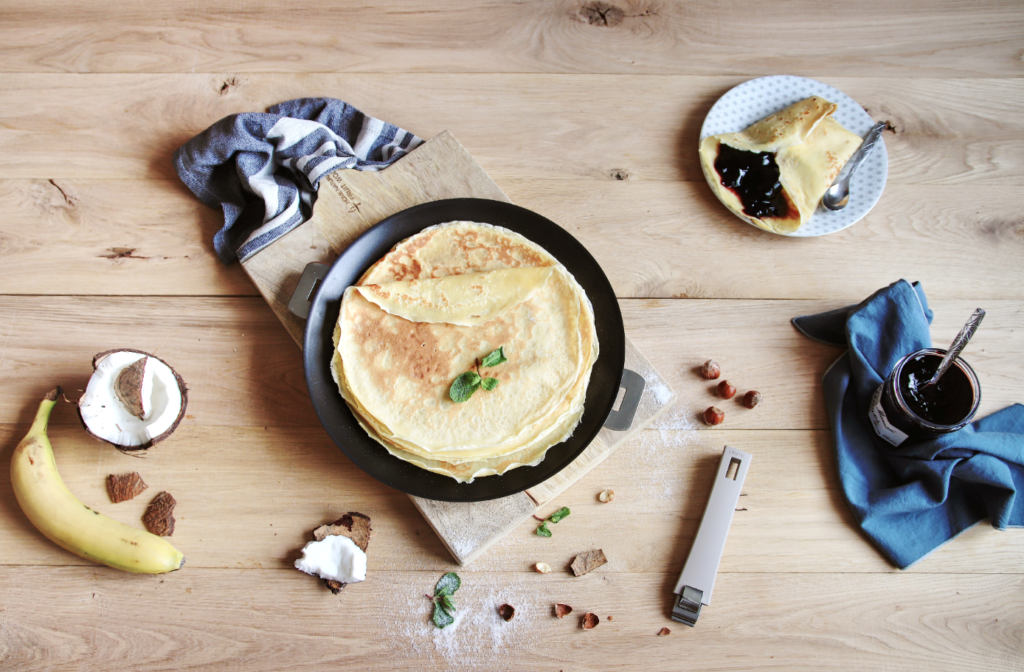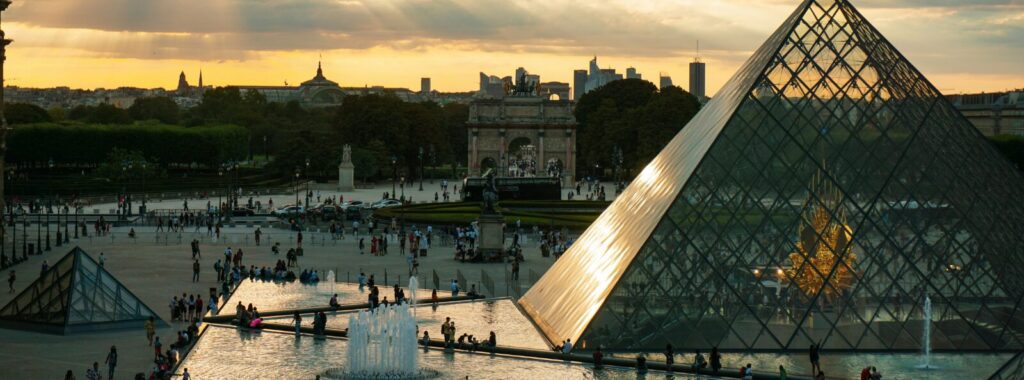1. February or how the festive season still goes on!
Once Christmas and New Year’s celebrations are over, the winter season hits its peak with the long winter months of January and February. This is why, since ancient times, French and European traditions mark the beginning of February with light-hearted celebrations and customs pertaining to food as one would expect from France. Candlemas (la Chandeleur) and Shrove Tuesday (Mardi-Gras) are the highlights and the tradition is to indulge in “crêpes”, the delicious thin French pancakes and “beignet”, French doughnuts which are crispy fried dough pastries dusted with icing sugar.
The Chandeleur or Candlemas

The Chandeleur is a religious holiday in France. It occurs on the 2nd of February, 40 days after Christmas, the date of Jesus’ birth. The date marks when Jesus was presented at the Temple. According to local customs, candles had to be lit at midnight as a symbol of purification. It is said that the pope who established this commemoration used to thank with a “crêpe” the pilgrims who had travelled to Rome to light a church candle. However over time, the Chandeleur lost its religious meaning but the tradition remained and today, most French celebrate Candlemas as a day of fun and good food. It’s a family time most simply associated with eating crêpes or even taking some to school.
Galeries Lafayette hosts the house of Pierre Hermé, French cake and pastry specialist awarded the title of World’s Best Pastry Chef in 2016 by the World’s 50 Best Restaurants.
Pierre Hermé is to be found on the 1st floor and lower ground floor of the Lafayette Coupole and on the ground floor of Lafayette Maison and Gourmet.
Mardi-Gras or Shrove Tuesday: “carnivaling”!
Mardi-Gras is set 47 days before Easter Sunday; it can therefore fall anywhere between February 3rd and March 9. Originally Mardi-Gras would begin on Sunday and last three days, the celebrations culminating in large feasts on Tuesday night. But by the beginning of the 20th century, the event was restricted to the Tuesday observance. Traditionally viewed as a day of repentance, Mardi-Gras became the last feasting day before the Lenten fasting season. In France, we eat “crêpes” and “beignets” that go by the name of “Oreillettes” or “Bottereaux”. The tradition came about as a way to use the milk, fats, and eggs before fasting so these wouldn’t go to waste. And indeed, Mardi-Gras or “Fat Tuesday” refers to the consumption of all fats before embarking on the Lenten fast.
Mardi-Gras is also a day of carnival in many places and is often celebrated with parades. In France, some of the carnivals have become famous such as the one in Nice that goes on for 10 days featuring parades of flower covered floats with giant figures. The Paris Carnival was once a huge event and the Parisians would parade along the streets of the city wearing masks along with pageant, jugglers and stilt walkers. After a long interruption, the tradition has been recently revived in the capital. Basically, the idea is to have a great time before quieting down and doing penance.
2. Celebrating Mardi-Gras and Chandeleur with Galeries Lafayette
Galeries Lafayette is no exception to these traditions and if you happen to be in Paris around this time, you will be able to:
1. Savor some crêpes and beignets along with cider or sparkling wine!
2. Buy everything you need to make them!
3. Parade in the streets with masked kids!
Make sure you visit Galeries Lafayette Gourmet and Galeries Lafayette Maison to find everything you need to make the best pancakes and donuts!
For Mardi-Gras, kids can wear their best costumes and be the kings of the carnival! Galeries Lafayettes hosts Disney Store where you will be able to pick your best costume! They will indeed be spoiled with choice!





